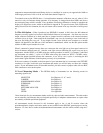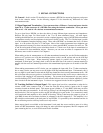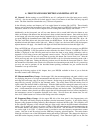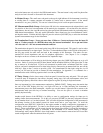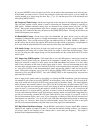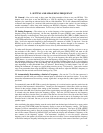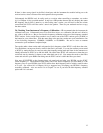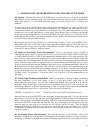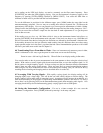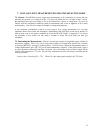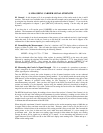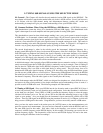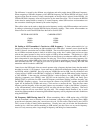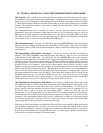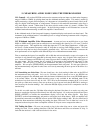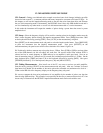14
and a reading on the LED level display, we need to accurately set the filter center frequency. Press
[COUNTER] just under the LED frequency display. Now set the instrument’s frequency register to this
frequency by pressing [CNTR→FREQ] followed by [MEAS CONT]. Last select the 20Hz filter to
eliminate as much noise as possible from the level measurement.
To see the difference in precision for the different ranges, press [100db] under the range label on the
measurement/entry sub panel. Now we may see a reading near what we expected, like –30.2dbm on the
measure/entry LED display. Now we can proceed to get a more precise measurement of within .01dbm.
Change back to the 10db range by pressing [10db] under the range label and the reading changes to –30.17.
Now we can record the oscillator’s output into our data book or make adjustments to it to get the power
level in dbm we want.
If the reading was very low, say –90.12dbm, which is close to the instruments internal noise floor, try
pressing [LO NOISE] on the measurement mode sub panel. If the level now drops to say –90.05dbm, use
this low noise mode since the level using the low distortion was affected by the instrument’s internal noise.
It the reading increased, use the low distortion mode reading since this indicates there were other strong
signals present maybe not in the filter’s pass band but had caused intermodulation products to fall within
the filter’s pass band, more on this later in Chapter 16.
6.4 Transforming Power From dbm to Watts - Since our instrument only measures power in dbm,
which is referenced to .001 watt, to get the power in actual watts we can use the following:
Power in watts = .001 anti log (P dbm/10) Where P dbm is our display reading in dbm units.
You can also make on the air power measurements in the same manner as above using the selective level
modes. With carriers or steady signals pick the narrowest band filter to cover the complete signal, i.e. 20
Hz for carriers or single frequency signals. It’s best to always use the low distortion selective measurement
mode if there are other strong signals present. These are more likely to cause intermodulation products
when using the low noise mode and will cause an inaccurate power reading. But you can test for this by
watching the level reading and changing mode as described above in section 6.3.
6.5 Averaging With Varying Signals - With rapidly varying signals, the display reading will be
changing rapidly over a large range. This will be the case with carriers subject to selective fading. The
display readings will be more stable if averaging is used. Averaging will also increase the probability of a
more accurate reading in the presence of rapid fading intermodulation products and noise so it is always
best to have it on by pressing [AVE] on the measurement/entry panel when measuring radio signals. Also
averaging should always be on when measuring greatly varying signals such as SSB signals.
6.6 Saving the Instrument’s Configuration – For use in a future example let’s now store the
instrument’s configuration. Press [STORE] followed by entering 1 in the entry sub panel.



